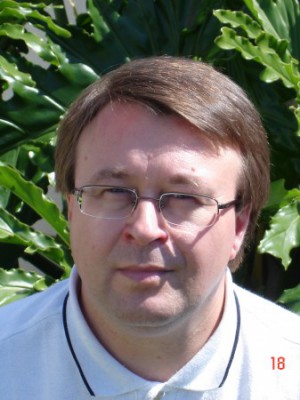resumo
RATIONALE The structural characterization of unknown oligosaccharides remains a big challenge since a large number of isomeric structures are possible even for disaccharides. In this work, electrospray ionization collision-induced dissociation tandem mass spectrometry (ESI-CID-MS/MS) was used for the differentiation of isomeric pentose disaccharides, alpha-(1 -> 5)-L-arabinobiose (Ara(2)) and beta-(1 -> 4)-D-xylobiose (Xyl(2)). METHODS ESI- MS/MS spectra of [M + Li](+) and [M + Na](+) ions of Ara(2) and Xyl(2), as well as these precursor ions of O-18-labelled disaccharides, were acquired using two mass spectrometers equipped with different analyzers: LIT (linear ion trap) and Q-TOF (quadrupole time-of-flight). RESULTS Product ions observed in MS/MS spectra arise from the cleavage at the nonreducing side of the glycosidic bond (Y-1(+)) and from cross-ring cleavages (0,1)A(2)(+), (0,2)A(2)(+), and (0,3)A(2)(+) at the reducing residue. Statistically significant differences were observed between the relative abundance of specific product ions, when comparing both disaccharides. These differences allowed discriminant models to be built and to propose a criterion using the relative abundances of selected ions capable of discriminating between the isomers for both adduct ions and spectrometers. CONCLUSIONS Isomeric pentose disaccharides can be distinguished based on the fragmentation of both [M + Li](+) and [M + Na](+) ions and using different mass spectrometers. However, LIT instrument has a better discriminant power. Copyright (C) 2012 John Wiley & Sons, Ltd.
palavras-chave
GLUCOSE-CONTAINING DISACCHARIDES; LINKAGE POSITION DETERMINATION; MULTIPLE-PHOTON DISSOCIATION; ANOMERIC CONFIGURATION; STRUCTURAL-CHARACTERIZATION; NEUTRAL OLIGOSACCHARIDES; GLYCOLALDEHYDE ANIONS; GAS-PHASE; ION; STEREOCHEMISTRY
categoria
Biochemistry & Molecular Biology; Chemistry; Spectroscopy
autores
da Costa, EV; Moreira, ASP; Nunes, FM; Coimbra, MA; Evtuguin, DV; Domingues, MRM
nossos autores
agradecimentos
The authors are thankful for the financial support provided to Ana S. P. Moreira (PhD grant, SFRH/BD/80553/2011), project PTDC/QUI-QUI/100044/2008, QOPNA (project PEst-C/QUI/UI0062/2011), CICECO, and RNEM by the Portuguese Foundation for Science and Technology (FCT).



